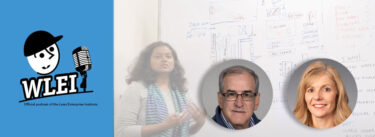“If history were taught in the form of stories, it would never be forgotten” -Rudyard Kipling
Without reflection there is no PDCA, and without PDCA, improvement cannot be continuous, nor sustainable. Essentially, there is no Lean without reflection.
As someone who tells stories for a living (and helps others do the same), I can say reflection without storytelling is also impossible. I see it all the time: few things get stuck in our minds like a well-told and engaging anecdote. The written word, particularly stories, is one of the most powerful tools at one’s disposal. Stories inspire us, teach us, and encourage us to question our actions. They educate us, entertain us, and challenge us.
It works the other way around, too. As writers – published or not – we recognize the cathartic and liberating feeling that jotting down thoughts and notes can give us. How many of us used to or still keep a journal? How much we learn about ourselves by reading those entries months or years later!
Why are stories important for lean people, you ask? Because they enable us to reflect. Storytelling has the power to help us think about our lean journey critically: through the experience of others we get fresh ideas, adjust our own approach to Lean, even change course if necessary.
We are not new to great storytelling in the lean community. At this year’s Lean Transformation Summit, I had the pleasure to interview Richard Sheridan of Menlo Innovations for Planet Lean. It is no coincidence that his official title is “CEO and Chief Storyteller.” Menlo’s groundbreaking approach to developing software and delighting customers would not have been possible without Richard’s effort to reflect on his previous experience as a traditional manager first. The inspiration we can all draw from Menlo would not be there if Richard hadn’t decided to tell his story.
Stories can be extremely powerful. Think about the series of lean novels written by Freddy and Michael Ballé – their power lies not only in their ability to articulate and explain lean thinking, but also in doing so by way of narrating the lives and struggles of Phil Jenkinson, Andrew Ward, and Jane Delaney.
Another example is of course Jim Womack’s Gemba Walks – a collection of little stories and reflections Jim has written from his travels and visits to businesses. Jim speaks to readers like few other authors can. For this reason, we’ve asked him to write a new column for Planet Lean, Yokoten, which you can read here. At Toyota, the word yokoten refers to the transfer of knowledge across the organization. As Jim has showed us time and again, stories are a great tool to spread learning.
We can’t forget the interaction between Sanderson and Porter in John Shook’s Managing to Learn. Every lean practitioner struggling with improvement and A3s can relate to their story, which is why the book has had such an impact in the lean community. Come to think of it, isn’t storytelling what A3s do? Don’t the different parts of an A3 help to tell the story of how a problem is being solved? The elements of an A3 can be likened to the elements of a story, fictional or not. You have a background and current situation, a quest for something (goal). You narrate at length how you aim to achieve that goal and discuss it in detail (analysis). Finally, a twist in the plot (countermeasure maybe?) changes the destiny of the main character. In the end (follow up?), a moral to the whole thing can be drawn. And, as Sanderson and Porter show us in Managing to Learn, a story helps break down concepts and reveal their true significance. A3 thinking is not easy. Explaining it in a dry, example-free way leads to nowhere.
Thanks to the many accounts of experiences and examples of implementations shared by lean thinkers, thousands have been inspired to embrace and then enabled to grasp lean principles and concepts in a way that would not have been possible otherwise. Stories invite participation.
Perhaps most importantly, storytelling helps us remember.
A few months ago I had the pleasure of publishing an article by a Dutch woman, Nienke van Berkum, who used Job Instructions to help her autistic son perform tasks he had previously found too overwhelming. It was a touching and powerful personal story that, among other things, helped me better understand Training Within Industry (TWI). Learning how to break down a task the child found so difficult – taking a shower – into simple and repeatable steps quickly helped him to perform it with confidence. Most of us don’t think twice about taking a shower. It’s an action we can all relate with. The child’s predicament is a strong reminder that we all learn at a different pace, and that there are tools (in this case, Job Instructions) that can come to our rescue.
Storytelling is an essential part of applying lean principles, because it facilitates reflection and therefore supports learning. In a recent article for Harvard Business Review, neuroeconomics researcher Paul J. Zak writes: “My experiments show that character-driven stories with emotional content result in a better understanding of the key points a speaker wishes to make and enable better recall of these points weeks later.” He goes on to say (and this is even more relevant to lean practitioners): “Make your people empathize with the pain the customer experienced and they will also feel the pleasure of its resolution – all the more if some heroics went in to reducing suffering or struggle, or producing joy.”
A3s are a highly effective, structured way to tell a story. They are the go-to storytelling. However, I also want to encourage you to take the time to document your findings and reflections in a much less structured way. Sit in your office or at home for half an hour at the end of your week, and just write down what you have on your mind and in your heart. I guarantee it will make things clearer for you when you have to update your A3, or at the next standup meeting. It will also make the case for lean more compelling within your team, as your story “shows” your colleagues how improvement actually happens rather than simply telling them what they need to do.





